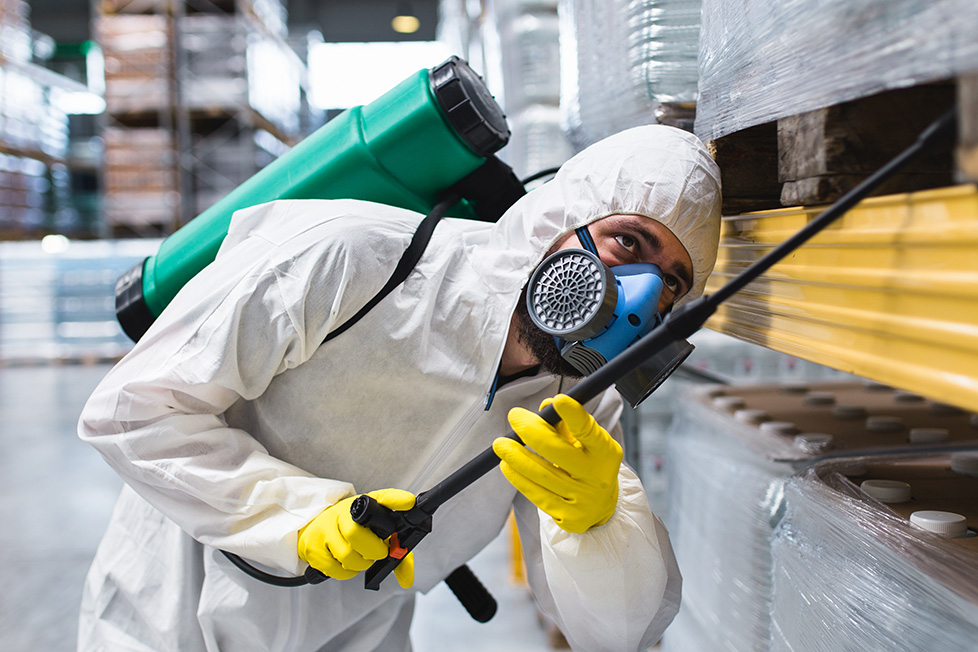Eco-Friendly Bug Control Approaches for Handling Wildlife in Urban Locations
Urban locations often find themselves at the intersection of human activity and wildlife, leading to unique difficulties in insect management. These approaches not just protect the environment yet additionally boost community interaction in wild animals administration. As urban populations continue to grow, recognizing the characteristics of wildlife interactions comes to be progressively crucial.
Understanding Urban Wildlife Characteristics
Understanding Urban Wild animals Dynamics is vital for creating efficient and environment-friendly insect control approaches. Urban areas are progressively ending up being habitats for numerous wild animals varieties, driven by variables such as environment fragmentation, food schedule, and human encroachment. Recognizing these dynamics enables a nuanced technique to pest administration that aligns with ecological principles.
Urban wild animals frequently consists of varieties such as raccoons, squirrels, and birds, which adapt to city environments, locating specific niches in environment-friendly areas, parks, and even houses. Their existence can result in disputes with humans, specifically when they make use of human sources for food and sanctuary. Recognizing the habits and environmental functions of these species educates techniques that decrease adverse communications while promoting biodiversity.
Moreover, acknowledging the interdependencies within city ecological communities aids in recognizing essential locations for environment preservation and restoration. This knowledge contributes to the growth of integrated bug administration (IPM) methods that consider the environmental equilibrium, thus reducing dependence on unsafe chemicals. By fostering coexistence in between human beings and metropolitan wild animals, cities can develop healthier atmospheres that profit both homeowners and neighborhood communities, paving the method for lasting urban living.
All-natural Repellents and Deterrents
Natural repellents and deterrents provide a lasting option to standard insect control approaches by harnessing the power of nature to maintain undesirable species away. These environment-friendly services usually use plant-based active ingredients, important oils, and other naturally occurring materials that discourage bugs without harming the environment.
One reliable all-natural repellent is peppermint oil, which is recognized to repel rats and insects. Its solid scent is unpleasant to many parasites, making it a prominent selection for urban settings. Vinegar and citrus peels can offer as deterrents, as their solid smells are commonly unappealing to numerous wildlife.
Furthermore, diatomaceous planet is an all-natural powder that can be spread out in areas prone to bug task, effectively drying out and hindering pests without posturing risks to non-target varieties. Garlic sprays and neem oil are identified for their capacity to ward off a wide array of parasites, consisting of both insects and bigger wild animals.
Applying these all-natural repellents not only reduces dependence on chemical pesticides yet likewise promotes a much healthier metropolitan ecosystem, fostering a more well balanced conjunction between people and wild animals. By using these techniques, city areas can efficiently manage insect populaces while decreasing ecological effect.
Environment Modification Techniques
Effective environment adjustment techniques play an important duty in sustainable parasite monitoring by modifying the environment to make it much less for pest problems. By understanding the ecological dynamics of city areas, homeowner can execute strategic alterations that discourage parasites while advertising biodiversity.
(Mole Removal)One key technique involves look what i found maintaining correct sanitation. This consists of normal waste elimination, securing trash can, and eliminating standing water to reduce breeding sites for pests and rats. Additionally, landscape design techniques such as selecting native plants can boost environmental balance, offering habitats for useful organisms while lessening resources for bugs.
An additional vital method is to secure entrance factors in buildings. Checking and repairing cracks in foundations, wall surfaces, and home windows can dramatically lower parasite access. Developing physical obstacles, such as fencings or plant buffers, can inhibit wildlife movement right into human-inhabited areas.
Integrated Parasite Administration Practices
Building upon habitat adjustment strategies, incorporated insect monitoring (IPM) techniques provide an all natural approach to managing parasite populations while minimizing ecological influence. IPM combines different approaches, consisting of biological, social, mechanical, and chemical controls, to achieve efficient bug administration.
Organic control entails the intro of natural killers or bloodsuckers to decrease insect populations. Social techniques, such as plant turning and hygiene, disrupt pest life cycles and lessen their habitats - Pest control service. Mechanical controls, like traps and obstacles, give prompt alleviation from bug pressures without chemical treatment
Chemical controls are made use of as a last option, concentrating on targeted applications that limit harm to non-target varieties and the setting. The choice of ecologically pleasant pesticides, when necessary, is essential to the IPM framework. In addition, monitoring insect populaces and examining prospective damages assists notify decision-making, guaranteeing that interventions are timely and efficient.
Area Participation and Education And Learning

(Exclusion Pest Control)Workshops and informative sessions can gear up locals with knowledge concerning native species, habitat conservation, and reliable safe parasite administration strategies. Cooperation with institutions, neighborhood organizations, and federal government agencies additionally boosts educational outreach, making sure that necessary details reaches diverse target markets.
Moreover, community-led efforts, such as community clean-up days and environment repair projects, not just promote biodiversity but additionally strengthen community connections. Pest Control. By encouraging citizens to share their experiences and monitorings, neighborhoods can develop targeted techniques that deal with certain neighborhood insect problems
Integrating responses from locals right into parasite administration intends enables a much more receptive and flexible approach to wild animals challenges. Ultimately, notified and involved neighborhoods are crucial to accomplishing lasting success in environmentally friendly pest control, resulting in healthier urban environments that respect both human and ecological needs.

Final Thought
To conclude, eco-friendly insect control approaches deal sustainable remedies for taking care of urban wildlife. By prioritizing environment adjustment, using all-natural repellents, and applying incorporated bug monitoring practices, areas can cultivate an unified coexistence with regional animals. Engaging citizens through education and learning boosts recognition and encourages responsible wild animals communications. Ultimately, these techniques not only safeguard biodiversity but also promote ecological health, making sure metropolitan locations stay vivid ecosystems where people and wildlife grow together.